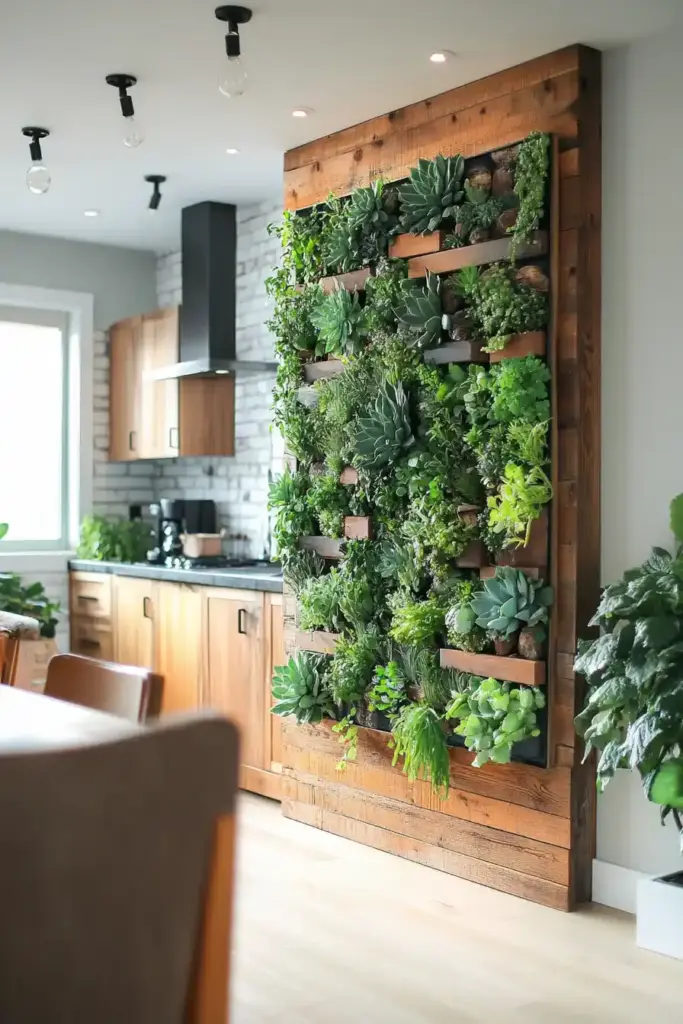Did you know that simply spending time in a garden can boost your happiness by up to 30%? It’s true! There’s something so refreshing about walking through a thoughtfully designed flower garden—it’s like a mini-vacation for your mind and spirit.
Whether you’re an experienced green thumb or just starting your gardening journey, I’m excited to share 10 inspiring flower garden ideas that are beautiful, easy to achieve, and sure to impress. Grab your gardening gloves—let’s get planting!
1. Vertical Gardens: Growing Up with Style
When I first dipped my toes into gardening, I thought the only way to create a lush garden was by spreading out across the yard. Turns out, I was missing out! Thanks to vertical gardening, even the smallest spaces can bloom into stunning displays. Whether you have a compact balcony, a narrow patio, or just want to maximize your space creatively, vertical gardens are a fantastic option. Let’s explore why they’re perfect and how you can create your own.
What Are Vertical Gardens and Why Are They Ideal for Small Spaces?
Vertical gardens are exactly what they sound like—gardens that grow upwards instead of sprawling across the ground. Think of them as living walls or green tapestries that transform blank spaces into vibrant, living art.
When I moved into an apartment with a tiny balcony, I worried I’d have to give up gardening altogether. Discovering vertical gardening changed everything. Suddenly, I could have a lush, colorful display without sacrificing precious floor space!
The beauty of vertical gardening is its versatility. Blank fences, narrow walkways, and even bare indoor walls can become beautiful vertical gardens. Plus, they’re not only space-saving—they add dramatic visual interest to any area.
Best Flowers for Vertical Planting
Not every flower thrives vertically, so it’s important to choose varieties that adapt well to tight spaces and stacked planting. Here are some top choices:
- Petunias: Bright, colorful, and perfect for cascading down walls.
- Ivy Geraniums: Their trailing habit makes them ideal for a waterfall effect.
- Pansies: Hardy and vibrant, especially in cooler seasons.
- Trailing Lobelia: Perfect for filling gaps and adding texture.
When selecting flowers, always consider their light and water needs. For shady areas, impatiens work wonderfully, while sun-drenched walls are perfect for petunias and lobelia. Mixing different colors and textures will create a lush, layered look.
DIY Tips for Creating a Vertical Garden with Pallets or Planters
Feeling crafty? Building your own vertical garden can be a rewarding project. Here’s how you can do it:
- Start with a sturdy foundation, such as a wooden pallet, a trellis, or modular wall planters.
- Line the structure with landscape fabric to prevent soil leakage.
- Use lightweight, nutrient-rich potting mix to ensure healthy roots.
- Plant your flowers tightly together to create a lush, full look.
- Prop pallets against a wall for support until plants are fully rooted.
Pro Tip: Always secure your vertical garden structure firmly, especially in windy areas!
Caring for a Thriving Vertical Garden
Maintaining a vertical garden requires a little extra attention, especially when it comes to watering and drainage:
- Water Evenly: The top layers tend to dry out faster. Drip irrigation systems can be a great help.
- Ensure Good Drainage: Without proper drainage, water can accumulate and rot the roots. Make sure each planting pocket has a way to drain excess moisture.
- Feed Regularly: Because plants are close together, nutrients can run out quickly. Use a balanced fertilizer every few weeks for best results.
Once you’ve mastered vertical gardening, you’ll wonder how you ever lived without it!
2. Monochromatic Magic: Creating a Dreamy Single-Color Flower Bed
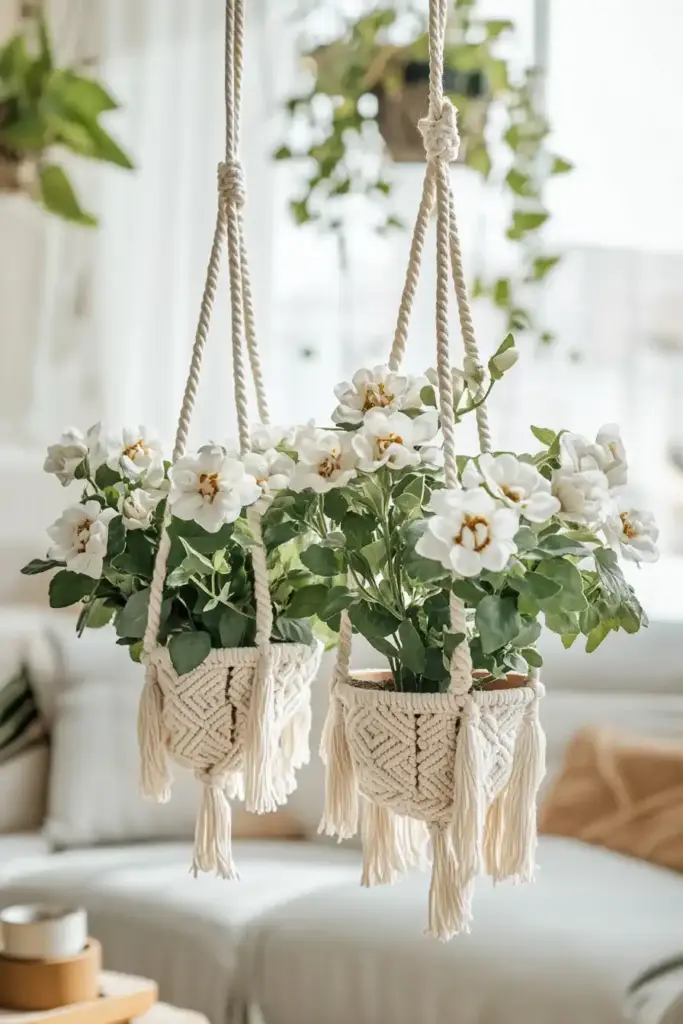
A few years back, I stood in front of my yard, overwhelmed by the rainbow of flower options. Reds, blues, yellows—how could I possibly choose? Then, I stumbled upon the idea of a monochromatic garden and everything clicked. Focusing on one color made my garden feel serene, sophisticated, and beautifully cohesive. If you’re looking for a simple yet striking flower garden idea, going monochromatic might just be your perfect match!
How to Design a Monochromatic Flower Garden
Designing a garden around a single color is easier than you might think—and the results are absolutely stunning. Start by picking your main color. Choose a hue that you love and that complements your home or outdoor space. Let’s say you choose purple (a personal favorite!). Now, think about incorporating various shades of that color to create depth and visual interest—deep plums, soft lavenders, and dusty mauves, all blending together.
A little tip: lay out your plants before digging them in. I learned the hard way that winging it can lead to clunky groupings. Setting everything out first lets you tweak the arrangement until it flows naturally, just like painting a canvas!
Best Flowers for a Single-Color Scheme
Depending on your chosen color, here are some fantastic flower pairings to consider:
- Purple Garden: Lavender, lilacs, purple coneflowers (echinacea), salvia, and catmint.
- Red Garden: Red tulips, poppies, and scarlet zinnias.
- Yellow Garden: Marigolds, coreopsis, and goldenrod.
Mix flowers that bloom at different times to keep your garden lively from spring to fall. For instance, combine early-blooming lilacs with late-summer echinacea for non-stop color.
Adding Texture and Height for Depth
A key secret to a successful monochromatic garden? Texture and height variation. Without these elements, even the prettiest color theme can feel flat.
Try combining:
- Tall, spiky plants (like foxgloves) in the background
- Mid-height bushy perennials (like lavender or salvia) in the middle
- Low groundcovers (like creeping thyme) in the front
Also, mix leaf textures—pairing fine, airy plants with broad-leafed varieties keeps the eye moving through the space and makes your garden look lush and layered.
Why Simplicity Wins in Garden Design
Sometimes, less truly is more. A single-color garden feels calming, intentional, and polished. Plus, it’s easier for beginners since you’re not juggling complicated color combinations. As your confidence grows, you can always sprinkle in a few accent colors if you like, but trust me—there’s something magical about letting one beautiful hue take center stage.
3. Wildflower Wonderland: Embrace Nature’s Free Spirit
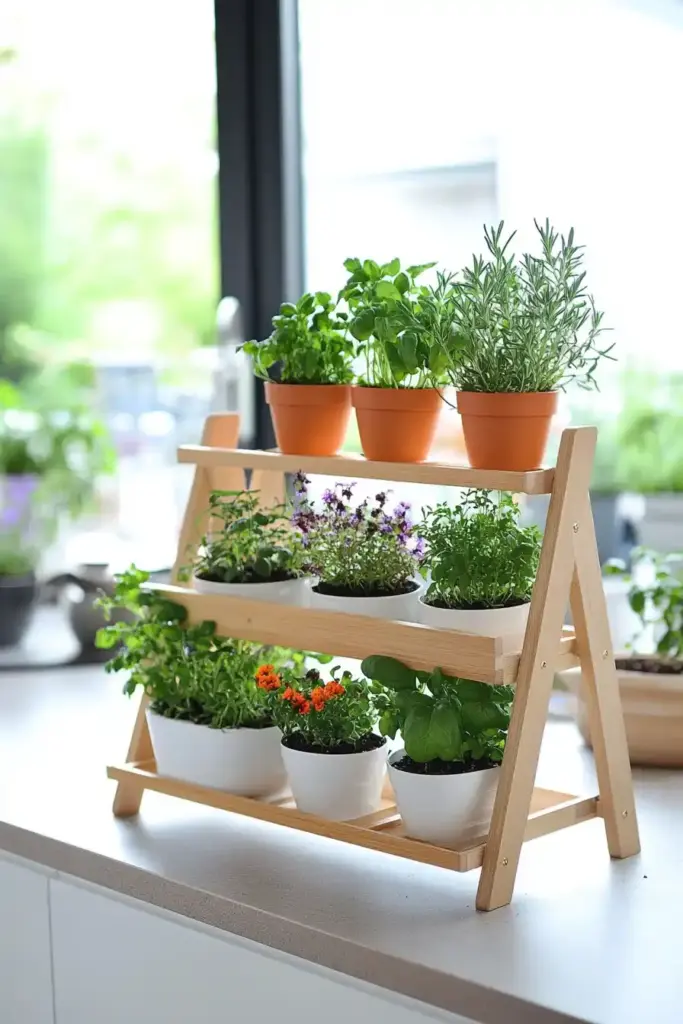
There’s a special kind of magic that happens when you let nature take the lead. I’ll never forget planting my first wildflower patch—it was a little chaotic, a little messy, and absolutely breathtaking. Wildflower gardens are one of the most rewarding flower garden ideas out there, blending vibrant colors, buzzing pollinators, and easy care into one dreamy landscape. Ready to unleash a bit of beautiful chaos in your yard? Let’s dive in!
Why Wildflowers Are the Ultimate Low-Maintenance Choice
Wildflowers are like the laid-back friends of the gardening world. They don’t demand constant attention or fancy fertilizers. They’re tough, resilient, and thrive in conditions where pickier plants might struggle.
One summer, during a brutal heatwave, my traditional flower beds wilted dramatically. Meanwhile, my wildflowers stood tall and cheerful, barely phased by the heat. If you want a garden that’s both low-fuss and high-impact, wildflowers are your best bet.
Wildflower gardens are also amazing for supporting local ecosystems. They attract bees, butterflies, and hummingbirds, helping pollinate not just your flowers but your entire neighborhood!
How to Plant a Wildflower Patch (Step-by-Step)
Creating your own wildflower oasis is easier than you might think. Here’s a simple guide:
- Pick the Right Spot: Choose a sunny area that gets at least 6 hours of light daily.
- Prepare the Soil: Clear the ground of grass and weeds. You don’t need to over-till—just loosen the topsoil lightly.
- Mix and Sow Seeds: Combine your wildflower seeds with sand for even spreading, then scatter them gently over the soil.
- Press, Don’t Bury: Lightly press the seeds into the soil without covering them too much—they need sunlight to germinate.
- Water Gently: Give the area a soft watering to help the seeds settle.
Pro Tip: Early spring and fall are the best times to plant for a full, healthy bloom!
Best Wildflower Mixes for Different Regions
Choosing the right seeds for your climate is key to success. Here are a few region-friendly suggestions:
- Northeast U.S.: Black-eyed Susans, lupines, and bee balm
- Southwest U.S.: California poppies, desert marigolds, and bluebonnets
- Pacific Northwest: Columbines, foxgloves, and camas lilies
One year, I made the mistake of planting a wildflower mix meant for cool climates in my dry, sunny backyard—let’s just say it didn’t end well. Always double-check your seed packets for regional recommendations!
How to Keep a Wildflower Garden Looking Intentional
It’s tempting to just “plant and forget,” but a little light management can make your wildflower garden look intentional instead of messy:
- Deadhead spent flowers to encourage even more blooms.
- Mow the area once a year (after seeds drop) to promote reseeding and keep things fresh.
- Let nature fill in the gaps—wildflowers are experts at finding their own rhythm if you give them the space.
Remember, a wildflower garden isn’t about perfection—it’s about celebrating nature’s free spirit. Once you let go of the idea of control, you’ll find a beauty that’s wild, raw, and truly unforgettable.
4. Fairy Tale Cottage Gardens: Overflowing with Charm and Whimsy
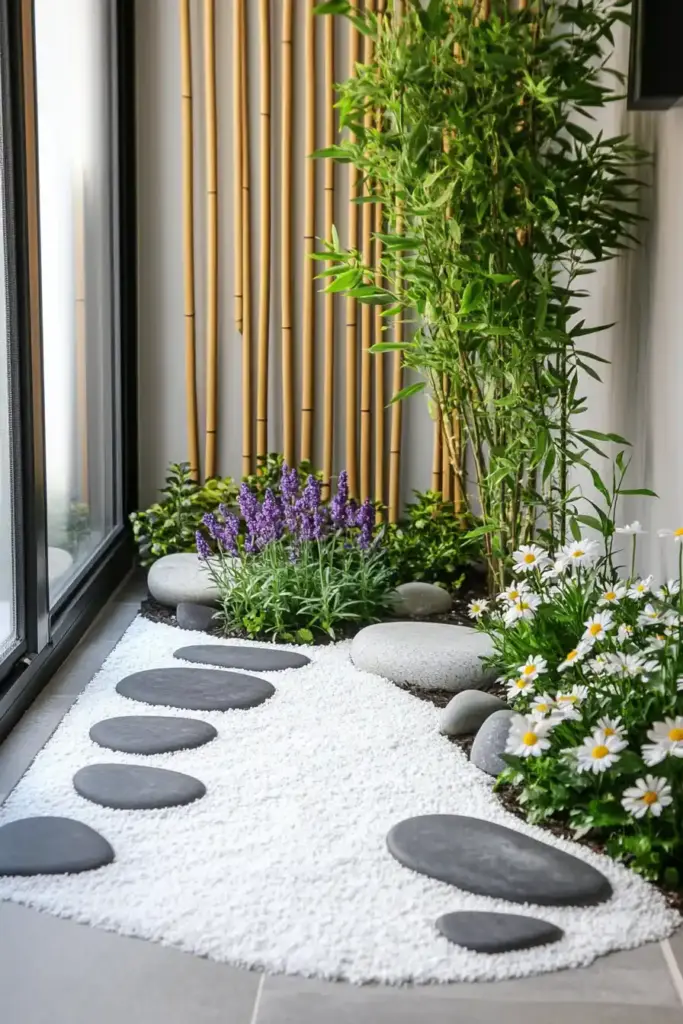
Have you ever dreamed of stepping into a storybook garden, where blooms tumble over pathways and every corner feels like a hidden treasure? That’s the magic of a cottage garden. I still remember visiting my first true cottage garden—there was no rigid structure, no harsh lines, just a joyful, overflowing abundance of flowers, greenery, and rustic charm. If you’re looking for flower garden ideas that feel enchanting and personal, this is the perfect style for you!
What Makes a Cottage Garden So Special?
Unlike formal gardens, where neat rows and symmetry rule, cottage gardens embrace a kind of beautiful chaos. The goal is simple: pack as much life, color, and fragrance into a small space as possible. It’s an inviting, cozy style where plants are encouraged to spill, weave, and self-seed, creating a natural and lived-in look.
One of my favorite parts? There’s no such thing as “too much” in a cottage garden. It’s all about abundance, warmth, and creating a space that feels like a welcoming hug.
Must-Have Flowers for a Cottage Garden
Certain blooms practically define the cottage garden aesthetic. Here’s a lineup you’ll want to include:
- Roses: Especially climbing or rambling varieties—perfect for trellises, fences, and archways.
- Shasta Daisies: Their bright, cheerful faces add a burst of sunshine.
- Foxgloves: Tall spires of bell-shaped flowers that bring vertical drama.
- Lavender: For its soothing scent and soft, silvery foliage.
- Hollyhocks: Towering and whimsical, they’re practically fairy-tale staples.
The secret is in the mix—combine different heights, shapes, and bloom times so your garden always has something new to discover.
Adding Rustic Charm with Trellises, Birdhouses, and Stone Paths
A true cottage garden isn’t just about the flowers—it’s about creating a whole whimsical world. Small rustic touches add tons of character:
- Trellises or arches draped with climbing plants like clematis or jasmine
- Handmade birdhouses tucked among the flowers
- Winding stone pathways that invite exploration
- Old ladders or vintage containers repurposed into plant stands
I once found a vintage wooden wheelbarrow at a yard sale and turned it into a portable flower display—it quickly became the centerpiece of my garden!
Mixing Edibles with Ornamentals for a Practical Twist
Why not have beauty and functionality? Cottage gardens often blur the line between ornamental and edible plants. Herbs like thyme, basil, and sage blend beautifully with flowers, while veggies like cherry tomatoes and lettuce can be tucked into sunny spots.
Imagine snipping fresh rosemary for dinner while butterflies flutter around your daisies—pure magic! Just remember to group plants with similar sun and water needs for happy growing.
5. Pollinator-Friendly Paradise: Welcome Bees, Butterflies, and Birds
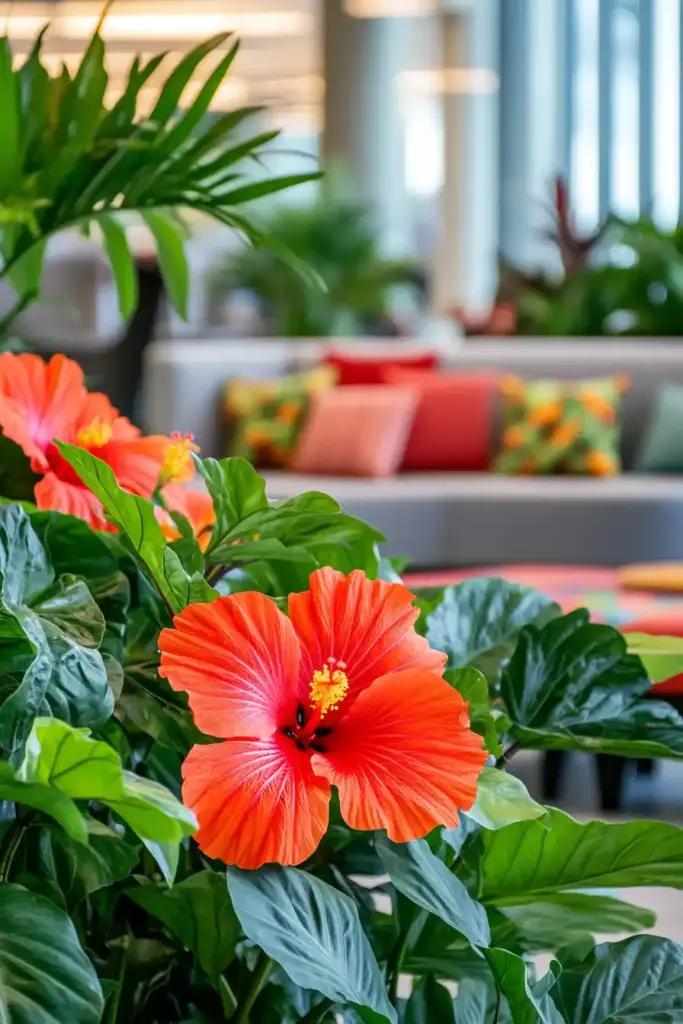
Did you know that one-third of the food we eat relies on pollinators? It’s true—and creating a pollinator-friendly garden is one of the best ways you can help support nature right from your own backyard. I’ll never forget the first season I planted milkweed and native flowers; my garden practically buzzed with life. If you want your flower garden ideas to make an impact beyond beauty, designing for pollinators is the way to go!
Why Every Garden Needs a Pollinator Oasis
Pollinators like bees, butterflies, and hummingbirds are crucial for the health of our ecosystems. Without them, flowers wouldn’t set seed, fruits wouldn’t ripen, and biodiversity would collapse. Sadly, pollinator populations are declining—but even a small patch of pollinator-friendly plants can make a difference.
A bonus? Pollinator gardens are vibrant, lively, and downright magical. Watching butterflies dance through your flowers or bees lazily buzzing from bloom to bloom brings a whole new level of joy to your outdoor space.
Best Flowers to Attract Pollinators
Not all flowers are created equal when it comes to attracting beneficial creatures. Here are some superstar plants you’ll want to include:
- Sunflowers: Big, bright, and full of nectar for bees and seeds for birds.
- Milkweed: Essential for monarch butterflies and a magnet for bees.
- Coneflowers (Echinacea): Tough, beautiful, and irresistible to pollinators.
- Lavender: A fragrant classic that draws in bees and butterflies alike.
- Bee Balm (Monarda): Vibrant colors and nectar-rich blooms that keep hummingbirds coming back.
One mistake I made early on? Choosing exotic flowers that looked pretty but didn’t offer much nectar. Native plants are almost always the best choice—they’ve evolved alongside local pollinators and know exactly what they need.
How to Create a Pollinator-Friendly Habitat
Pollinators need more than just flowers—they need a complete habitat. Here’s how to roll out the welcome mat:
- Water Source: Set out a shallow dish filled with pebbles and water for bees and butterflies to safely sip.
- Shelter: Leave small brush piles, install bee hotels, or plant dense shrubs where creatures can hide and nest.
- Year-Round Blooms: Plan your garden so something is blooming in every season—spring bulbs, summer perennials, and fall asters will keep the buffet open year-round.
Seasonal diversity ensures that your garden stays buzzing with life from early spring right into late autumn.
Why Supporting Pollinators Supports Your Entire Garden
Here’s the secret: by supporting pollinators, you’re also supporting yourself. More bees and butterflies mean better pollination for your fruits and veggies, healthier soil, and a more resilient garden overall. It’s a beautiful, mutually beneficial cycle—and it all starts with planting a few welcoming flowers.
6. Container Gardens: Blooming Beauty for Patios and Balconies
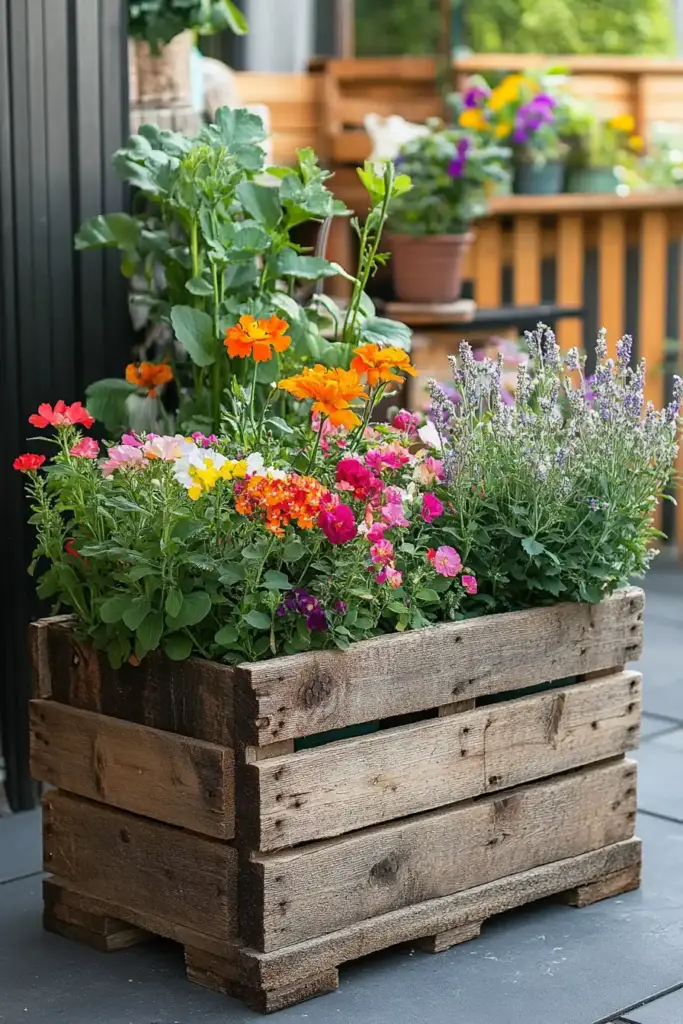
Think you need a huge yard to enjoy a thriving flower garden? Think again! Container gardening proves that even the tiniest balcony or patio can burst into color. I remember staring at my small, concrete balcony years ago, thinking it could never feel lush. Then I discovered the magic of container gardens—and I’ve never looked back. Whether you live in a city high-rise or have a cozy front porch, container gardening opens a world of creative possibilities.
Why Container Gardening Is Perfect for Small Spaces
One of the biggest perks of container gardening is flexibility. You can move pots around to catch the best sunlight, create seasonal displays, and even bring plants indoors when needed. Plus, containers allow you to control soil quality and drainage much more easily than traditional beds.
Another bonus? Container gardens can instantly transform a dull, uninspired space into a personal oasis. A few colorful pots, a cozy chair, and some string lights—and voilà, you have a mini outdoor retreat!
Choosing the Right Containers for Durability and Style
Not all containers are created equal. Here’s a quick guide to picking the best ones:
- Terracotta Pots: Classic and breathable but can dry out quickly.
- Ceramic Planters: Stylish and colorful, though heavier to move around.
- Metal Containers: Sleek and modern, but they can heat up quickly in the sun.
- Wooden Boxes: Rustic charm and great insulation for roots.
No matter what style you choose, make sure every container has good drainage. Plants sitting in soggy soil are doomed from the start. If you fall for a gorgeous pot without drainage holes, use it as a decorative cover and place a draining pot inside.
Best Flowers for Container Gardens
Some flowers naturally thrive in pots and planters. Here are a few top performers:
- Marigolds: Hardy, vibrant, and great at keeping pests away.
- Pansies: Cold-tolerant and cheerful, perfect for spring and fall.
- Snapdragons: Upright and colorful, adding height and drama.
- Petunias: Trailing and abundant, perfect for hanging baskets.
I once made the rookie mistake of trying to grow a sunflower in a tiny pot—it quickly flopped over. Lesson learned: choose compact, container-friendly varieties for the best results!
Mixing Flowers with Edibles for a Functional Twist
One of the coolest parts of container gardening is combining beauty and functionality. Try mixing in herbs and vegetables alongside your flowers:
- Basil and cherry tomatoes together in a sunny container
- Lavender and rosemary for fragrance and flavor
- Marigolds around peppers to naturally repel pests
I once created a “pizza garden” with oregano, basil, and tomatoes all in one large pot. Not only was it adorable, but it also made weeknight dinners extra fresh!
7. Moonlight Magic: Designing a Garden That Shines at Night
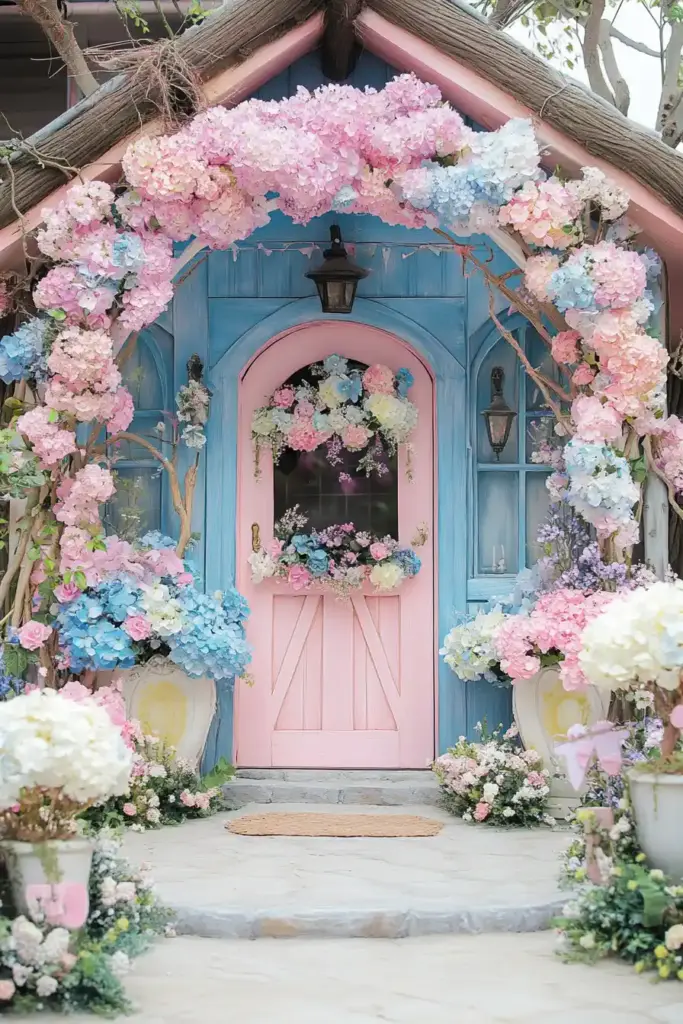
Imagine walking through your garden after sunset, surrounded by glowing blooms, gentle fragrances, and the soft shimmer of silver foliage. Sounds dreamy, right? That’s the beauty of creating a moonlight garden—a space that comes alive under the stars. I still remember the first time I planted evening-blooming flowers. Sitting outside under the glow of the moon felt like stepping into a hidden world. If you’re looking for flower garden ideas that extend the magic into nighttime, you’ll love this one!
Flowers That Bloom After Dark
Not every flower closes up when the sun goes down. Some truly shine in the evening hours. Here are a few favorites for a moonlit display:
- Moonflowers: Their large, fragrant white blooms open at dusk and close by morning.
- Evening Primrose: Soft yellow or white flowers that glow beautifully after dark.
- Night Phlox: Known as “midnight candy” thanks to its sweet evening fragrance.
- Angel’s Trumpet: Dramatic, trumpet-shaped flowers that release their scent at night.
One summer, I paired moonflowers and night phlox along my patio—and it turned ordinary evenings into magical ones. The soft scents and glowing blooms made it feel like another world.
Using White and Silver Foliage to Enhance Nighttime Beauty
White and silver foliage reflects the moonlight, creating a natural glow that adds a whole new dimension to your garden at night. Try mixing in plants like:
- Dusty Miller: Silvery-gray leaves that catch every beam of light.
- Lamb’s Ear: Soft, fuzzy foliage perfect for borders.
- Variegated Hostas: Their white-edged leaves gleam in low light.
Planting clusters of light-colored flowers and foliage will keep your garden visible and inviting, even after sunset.
Adding Lighting for Evening Ambiance
Strategic lighting transforms a nighttime garden into a cozy, enchanting retreat. Here are some easy ways to light it up:
- Solar Lights: Eco-friendly and easy to place along pathways and flower beds.
- String Lights: Perfect for draping over fences, pergolas, or tree branches.
- Lanterns and Candles: Mason jar lanterns or battery-operated candles create a soft, welcoming glow.
I once lined a gravel path with tiny solar lights and it completely changed the feel of my garden at night—simple but so effective!
Creating a Full Sensory Experience
A moonlight garden should engage more than just your sight. Fragrance plays a huge role! Choose night-blooming flowers with heavenly scents like jasmine or nicotiana. Add a small water feature, like a bubbling fountain, to bring soothing sounds into the mix. The goal is to create an experience that relaxes, rejuvenates, and invites you to linger outdoors longer.
8. Geometric Patterns: Bringing Modern Style to Flower Gardens
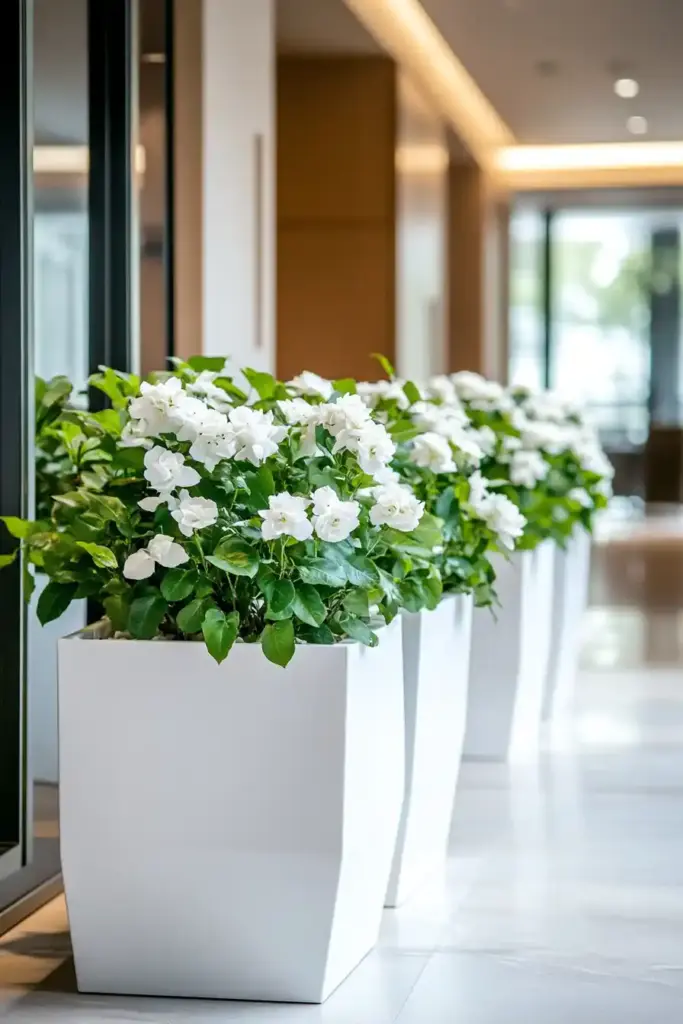
If you think gardens always have to be wild and free-flowing, think again! One year, I decided to experiment with geometric garden design, and it completely transformed my backyard. Using bold shapes and structured layouts, I created a space that felt clean, stylish, and intentionally artistic. If you love mixing natural beauty with modern flair, this is one of the most exciting flower garden ideas to try.
How Geometric Designs Create Visual Impact
Geometric patterns bring order and rhythm to outdoor spaces. Whether it’s squares, circles, spirals, or grids, these shapes guide the eye and make a garden feel curated rather than chaotic. Even a simple path bordered by neatly arranged beds can add a sense of calm sophistication.
I once visited a garden that had a circular bed surrounded by trimmed boxwoods—it felt like stepping into a living art gallery. The best part? Geometric designs work in both large yards and small patios!
Easy Ways to Add Geometry: Raised Beds, Hedges, and Pathways
You don’t need a landscape architect to bring structure to your garden. Here are some simple strategies:
- Raised Beds: Frame your garden with rectangular or square planters to define shapes and make maintenance a breeze.
- Boxwood Hedges: Perfect for creating clean lines, squares, or even labyrinth patterns.
- Gravel Pathways: Combine hard surfaces with planted beds for a beautiful contrast between soft and hard textures.
One of my favorite projects was building a spiral herb garden with bricks—it added height, movement, and tons of visual interest, all in a small footprint!
Using Bold Colors to Highlight Shapes
Color plays a huge role in geometric gardens. To make your shapes pop:
- Plant vibrant flowers like red salvias or bright marigolds inside clearly defined beds.
- Use monochromatic planting within each shape—think a purple circle next to a yellow square.
- Highlight edges with contrasting foliage like variegated grasses or dark-leaved coleus.
When I first experimented with color-blocking by planting beds of all white alyssum next to beds of deep purple salvia, the contrast was stunning—and incredibly easy to maintain.
Helpful Tools for Planning a Geometric Garden
If designing perfect shapes by hand feels overwhelming, technology can help:
- Garden Planning Apps like iScape or Garden Planner allow you to design layouts before lifting a shovel.
- Graph Paper Sketches: Old-school but still incredibly useful for mapping out symmetry and spacing.
- Landscape Design Software: Programs like SketchUp help visualize 3D layouts if you’re tackling a larger project.
Taking the time to plan upfront saves endless frustration later—and it makes the final reveal that much more satisfying!
9. Tropical Oasis: Turn Your Backyard Into a Paradise
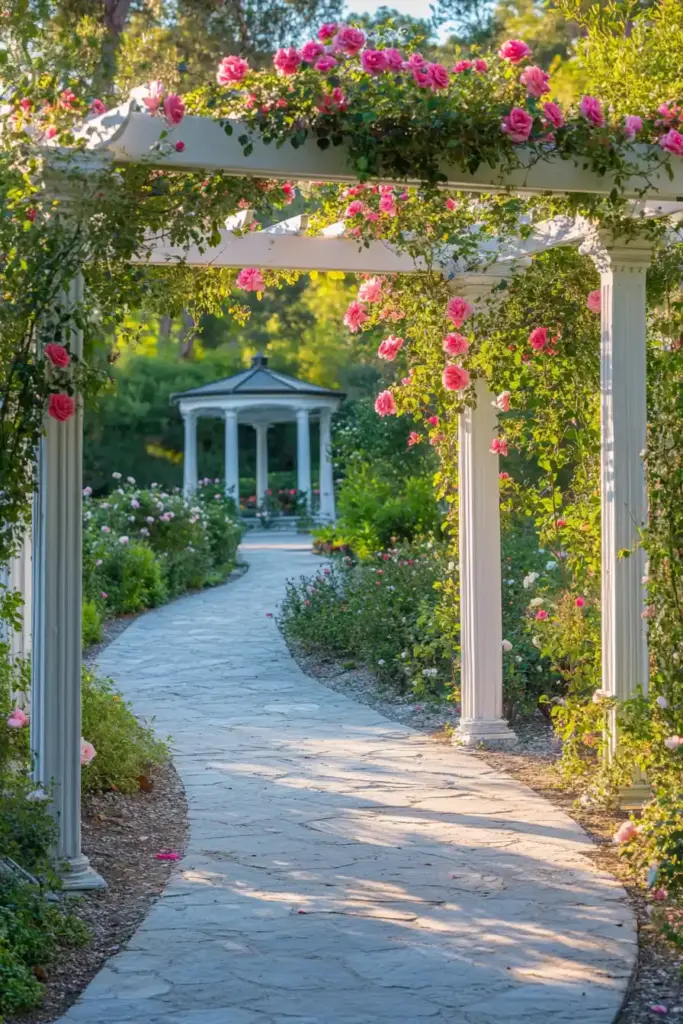
Ever wished you could escape to a tropical island without leaving your home? Good news: you can! I remember the first time I decided to create a tropical garden vibe in my backyard—it instantly felt like a staycation destination. With the right flowers, greenery, and a few creative touches, you can transform your outdoor space into an exotic retreat. This is one of the boldest and most rewarding flower garden ideas you can bring to life!
Choosing Flowers That Scream “Tropical Paradise”
The heart of a tropical garden lies in its show-stopping blooms. Look for plants with bold colors, dramatic shapes, and lush foliage. Some favorites include:
- Hibiscus: Giant, colorful flowers that give instant island vibes.
- Bird of Paradise: Iconic orange and blue blooms that look like soaring birds.
- Cannas: Tall plants with striking leaves and vibrant flowers.
I once planted a row of hibiscus along my fence line, and it completely changed the feel of my yard—it suddenly felt vibrant, exotic, and alive!
Layering with Lush Greenery for a Jungle Feel
Tropical gardens aren’t just about the flowers—it’s the layers of greenery that really set the scene. Think oversized leaves, dense planting, and rich textures. Some must-haves include:
- Palm Trees: Like queen palms or dwarf date palms for that classic tropical silhouette.
- Banana Plants: Even if they don’t fruit, their giant leaves are breathtaking.
- Elephant Ears (Colocasia): Enormous, heart-shaped leaves that create instant drama.
I added a few potted banana plants around my patio one summer, and it felt like stepping into a jungle hideaway every time I stepped outside.
How to Grow Tropical Plants in Cooler Climates
Worried you don’t live in the tropics? No problem! Here’s how you can still pull off a tropical garden vibe even in temperate zones:
- Use Containers: Plant tropical flowers and trees in pots so you can bring them indoors when frost threatens.
- Mulch Generously: Insulate roots with a thick layer of mulch to protect against sudden cold snaps.
- Pick Hardy Varieties: Try cold-tolerant plants like windmill palms or hardy banana species.
The first year I grew cannas, I mulched them heavily before winter—and to my delight, they came roaring back bigger and better the next spring!
Decorating with Tiki Torches, Bamboo, and Bright Accents
To truly transport yourself to paradise, add a few thematic touches:
- Tiki torches: Great for lighting and keeping mosquitoes away.
- Bamboo fencing: Use it to section off areas or hide unsightly views.
- Colorful outdoor cushions and rugs: Bright, tropical patterns tie everything together.
One of my favorite easy upgrades was hanging a string of pineapple-shaped lights around my patio—small detail, big tropical energy!
10. Succulent Sensations: Beauty and Simplicity in One
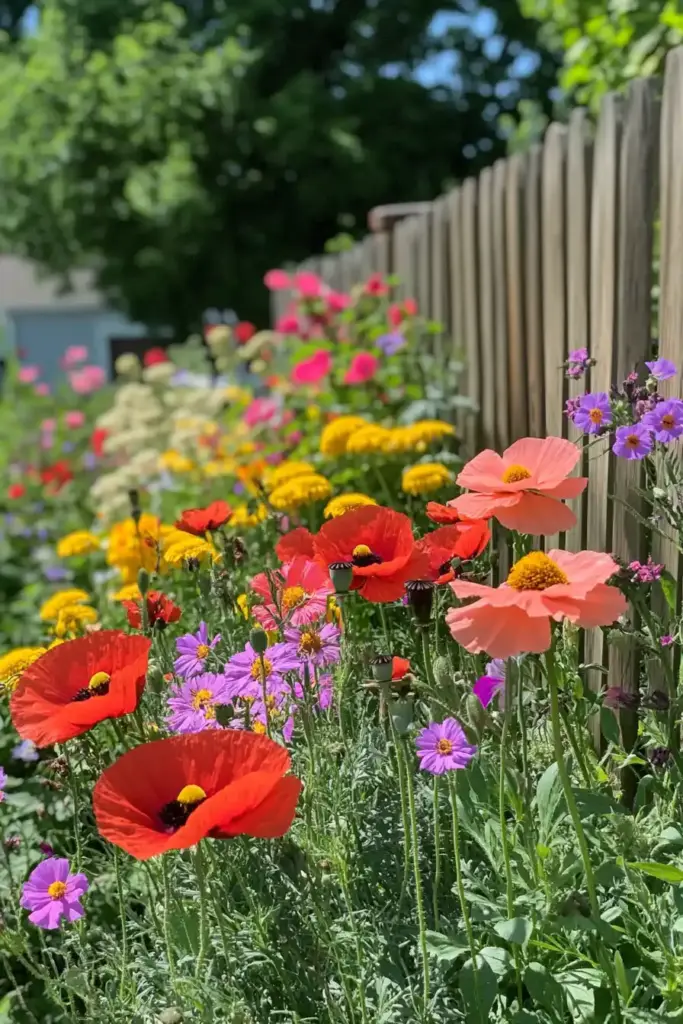
If you’ve ever worried about keeping your garden alive during heatwaves—or if you simply forget to water sometimes (no judgment!)—then succulents are about to become your best friends. I first fell in love with succulents when I realized how forgiving they are. Stylish, low-maintenance, and endlessly versatile, they’re perfect for anyone looking for stress-free flower garden ideas with maximum impact.
Why Succulents Are a Dream for Dry Climates and Busy Gardeners
Succulents are built for survival. Their thick, fleshy leaves store water, meaning they can endure long dry spells without so much as a droop. This makes them ideal for:
- Hot, sunny climates
- Busy lifestyles
- Gardeners who might occasionally forget the watering can
I once left my potted succulents unattended for two weeks during a vacation—and they didn’t just survive, they thrived! Meanwhile, the rest of my garden was begging for mercy. Since then, succulents have earned a permanent place in my heart (and in my pots).
Creating Stunning Succulent Displays
Succulents come in endless shapes, colors, and textures, making them perfect for creative arrangements. Some great combinations include:
- Echeverias: Rosette-shaped and available in pastel shades.
- Sedums: Low-growing varieties perfect for groundcovers and borders.
- Aloes and Haworthias: Sculptural and striking for centerpieces.
Pro Tip: Arrange succulents in odd numbers (like groups of three or five) for a more natural and pleasing look.
One of my favorite projects was building a small tabletop terrarium filled with tiny echeverias and mini cactus varieties—it was like having a miniature desert landscape right inside my home!
Pairing Succulents with Drought-Tolerant Flowers
Want to jazz things up even more? Mix succulents with other drought-tolerant flowers like:
- Zinnias: Bright and bold, thriving in the same sunny conditions.
- Portulacas: Tough little flowers that bloom nonstop.
- Mexican Sunflowers: Their fiery colors contrast beautifully with muted succulents.
Last summer, I tucked zinnias between clusters of jade plants—and the vibrant color explosion was absolutely stunning!
Caring for Succulents Through Extreme Weather
While succulents are hardy, they do need a little TLC in extreme conditions:
- Hot Summers: Provide afternoon shade during intense heatwaves.
- Cold Winters: Bring pots indoors before the first frost or cover in-ground plants with frost cloth.
- Avoid Overwatering: Always use well-draining soil and containers with drainage holes.
I learned (the hard way) that even hardy succulents can rot if they sit in soggy soil—so now I always prioritize drainage first, beauty second.
Frequently Asked Questions (FAQ)
1. What is the easiest flower garden idea for beginners?
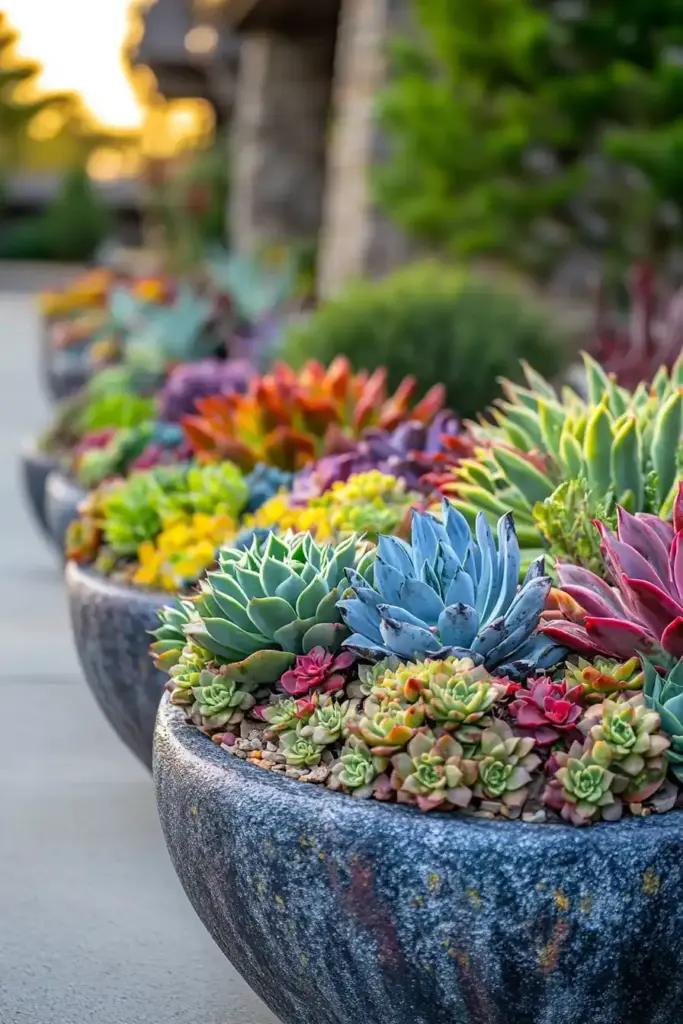
If you’re just starting out, container gardens or vertical gardens are fantastic options. They’re easy to manage, flexible, and don’t require a large space. Plus, you have complete control over the soil and sunlight conditions.
2. How do I choose the right flowers for my garden?
First, consider your local climate and the amount of sunlight your garden receives. Choose flowers that thrive in those conditions. For example, succulents and zinnias love full sun, while impatiens and ferns prefer shady spots. Also, think about your desired color palette and bloom times to ensure continuous color throughout the seasons.
3. Can I combine edible plants with flowers?
Absolutely! Mixing herbs and vegetables with ornamental flowers adds both beauty and functionality to your garden. Herbs like basil, rosemary, and chives pair beautifully with flowers like marigolds and pansies. Just make sure plants with similar light and water needs are grouped together.
4. What flowers attract the most pollinators?
Pollinators love flowers that are rich in nectar and easy to access. Top choices include lavender, milkweed, coneflowers, bee balm, and sunflowers. Native plants are often the best bet since they’re perfectly adapted to local pollinators’ needs.
5. How do I maintain a flower garden with minimal effort?
Choose low-maintenance plants like wildflowers, succulents, or drought-tolerant varieties. Group plants by their watering and sunlight needs to streamline care. Mulching heavily can also reduce the need for frequent watering and weeding.
6. Can I create a beautiful flower garden if I only have a balcony?
Definitely! A container garden is perfect for balconies and patios. You can grow a wide range of flowers, herbs, and even small vegetables in pots. Plus, using vertical garden techniques helps maximize limited space and creates a lush, layered look.
Conclusion: Your Dream Flower Garden Awaits
There you have it—10 inspiring flower garden ideas that are sure to spark your creativity and help you build a garden you truly love. Whether you’re dreaming of a whimsical cottage escape, a sleek modern layout, or a lush tropical retreat, there’s no wrong way to express yourself through flowers.
Remember, the best gardens aren’t just about perfect plants—they’re about creating spaces that reflect your personality, fit your lifestyle, and bring you joy every time you step outside. Start small, experiment boldly, and most of all, have fun getting your hands dirty!
Ready to create your own garden masterpiece? We can’t wait to see what you grow!


